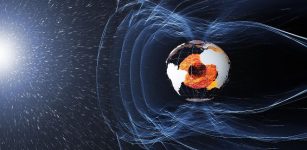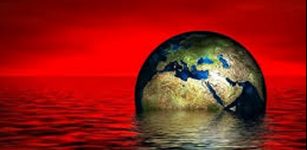Tourists Help Scientists Reveal Microplastic Pollution On Remote Arctic Beaches
Eddie Gonzales Jr. – MessageToEagle.com – We know that microplastic contamination has reached the Arctic, but quantifying the amount that appears on beaches and understanding where it came from is difficult.
 Arctic ice – Image credit: Pixabay
Arctic ice – Image credit: Pixabay
Scientists asked tourists on Arctic cruises to take part in a program of sample collection while visiting Svalbard and used these samples to identify microplastics that probably originated from ships and fishing net.
Tourists acting as citizen scientists have helped a research team detect microplastics on remote Arctic beaches. The global scale of plastic production means that these tiny fragments of plastic are now ubiquitous, and scientists fear that ocean currents will cause plastic to accumulate in the Arctic, damaging ecosystems. But our knowledge of the scale and type of plastic pollution in the Arctic is incomplete. Researchers recruited holidaymakers to carry out sample collection during cruises, hoping to fill in some of the gaps in their knowledge.
 Photo of small fragmented plastic particles observed on Lomfjord (location 9) in August 2017. Image credit B. Lutz with permission)
Photo of small fragmented plastic particles observed on Lomfjord (location 9) in August 2017. Image credit B. Lutz with permission)
“Plastic pollution is now ubiquitous. It is found on land and in soil and most rivers of the world,” said Dr Bruno Walther of the Alfred Wegener Institute, Helmholtz Centre for Polar and Marine Research, author of the study in Frontiers in Environmental Science. “It is even found in the polar oceans and the deepest ocean trenches.”
Plastic gets everywhere
The Svalbard archipelago is Europe’s northernmost landmass – beautiful, remote, and at risk from microplastics transported by ocean currents. Four tourist cruises visiting Svalbard in 2016, 2017, 2021 and 2022 collected sediment samples: all cruises except 2022 also surveyed macroplastic debris (between 2.5 and 10cm in size) for a different study. Initially, single samples were taken from beaches using simple metal tools and sent to the scientists with metadata and photographs to record sampling locations.
Later this was expanded to cover whole beaches with sampling grids.
“Citizen science is possible even in remote Arctic beaches,” said Walther. “This helps to cut down on travelling time, CO2 emissions and costs for scientists, and it helps to engage citizens in a global environmental issue.”
These samples were dried out, weighed, and measured. Each sample was filtered to capture particles 1mm or larger in size. This boundary was selected on the basis that larger particles don’t easily become airborne, an assumption that the scientists tested by keeping a bowl of purified water next to their worksurface and filtering it to search for microplastics after their analysis was complete: no microplastics had drifted from the laboratory’s air into the water.
To avoid plastic contamination, the scientists ran an air purifier, wore cotton lab coats, avoided synthetic clothing, and covered samples with aluminum lids. Identified plastic particles were examined under a microscope and then analyzed using spectroscopy.
Written by Eddie Gonzales Jr. – MessageToEagle.com Staff
Related Posts
-
 Is The Ancient Oarfish Legend Warning Of Coming Earthquakes True?
No Comments | Feb 28, 2017
Is The Ancient Oarfish Legend Warning Of Coming Earthquakes True?
No Comments | Feb 28, 2017 -
 2 Million ‘Hidden’ Earthquakes Identified In California – A Quake Occurs Every Three Minutes In The Region
No Comments | Apr 23, 2019
2 Million ‘Hidden’ Earthquakes Identified In California – A Quake Occurs Every Three Minutes In The Region
No Comments | Apr 23, 2019 -
 Link Between Climate Change And Immune Health – New Research
No Comments | Aug 25, 2023
Link Between Climate Change And Immune Health – New Research
No Comments | Aug 25, 2023 -
 Dust Storms Shed New Light On Why A Once Green Sahara Turned Into A Desert
No Comments | Jul 20, 2017
Dust Storms Shed New Light On Why A Once Green Sahara Turned Into A Desert
No Comments | Jul 20, 2017 -
 Sahara Can Be Green Again Thanks To New Wind And Solar Technology
No Comments | Sep 10, 2018
Sahara Can Be Green Again Thanks To New Wind And Solar Technology
No Comments | Sep 10, 2018 -
 Why Did A Giant Hole Appear In The Sea Ice Off Antarctica?
No Comments | Jun 13, 2019
Why Did A Giant Hole Appear In The Sea Ice Off Antarctica?
No Comments | Jun 13, 2019 -
 Earth’s Magnetic Poles Could Start To Flip. What Happens Then?
No Comments | Dec 10, 2018
Earth’s Magnetic Poles Could Start To Flip. What Happens Then?
No Comments | Dec 10, 2018 -
 Climate Change: Potential To End Humanity Is ‘Dangerously Underexplored’ Say Experts
No Comments | Aug 2, 2022
Climate Change: Potential To End Humanity Is ‘Dangerously Underexplored’ Say Experts
No Comments | Aug 2, 2022 -
 Controversial Theory Suggests Humans Turned Sahara Into A Desert
No Comments | Mar 15, 2017
Controversial Theory Suggests Humans Turned Sahara Into A Desert
No Comments | Mar 15, 2017 -
 Unusual Hole In Ozone Layer Forms – This One Is Over The Arctic
No Comments | Apr 9, 2020
Unusual Hole In Ozone Layer Forms – This One Is Over The Arctic
No Comments | Apr 9, 2020
